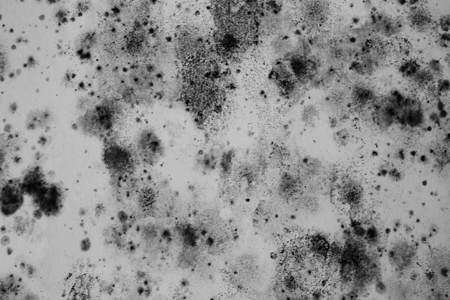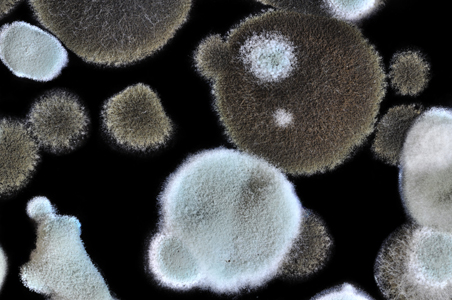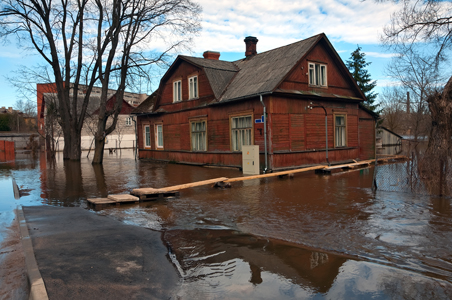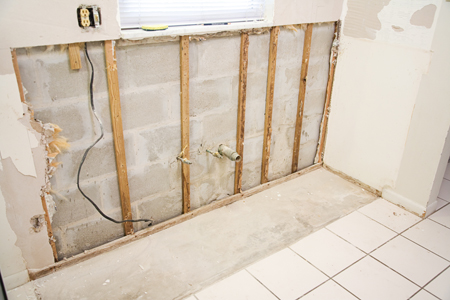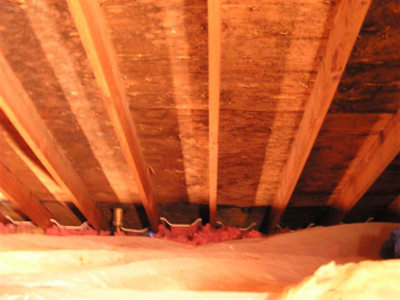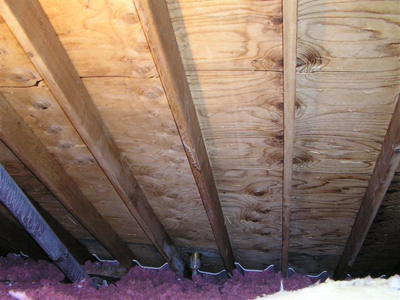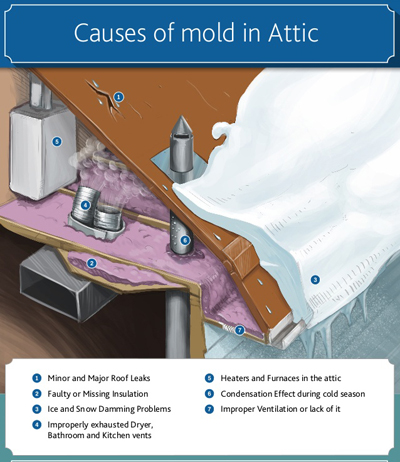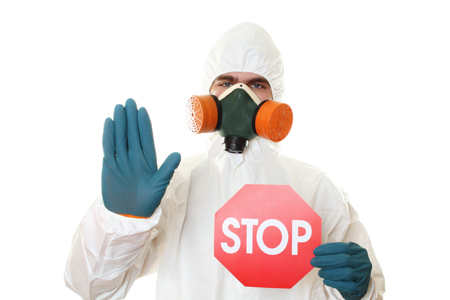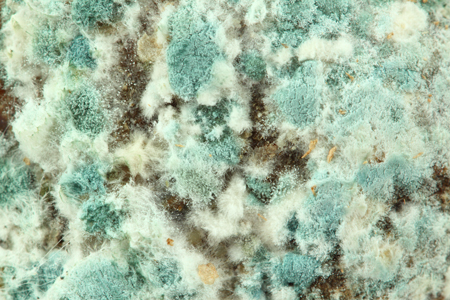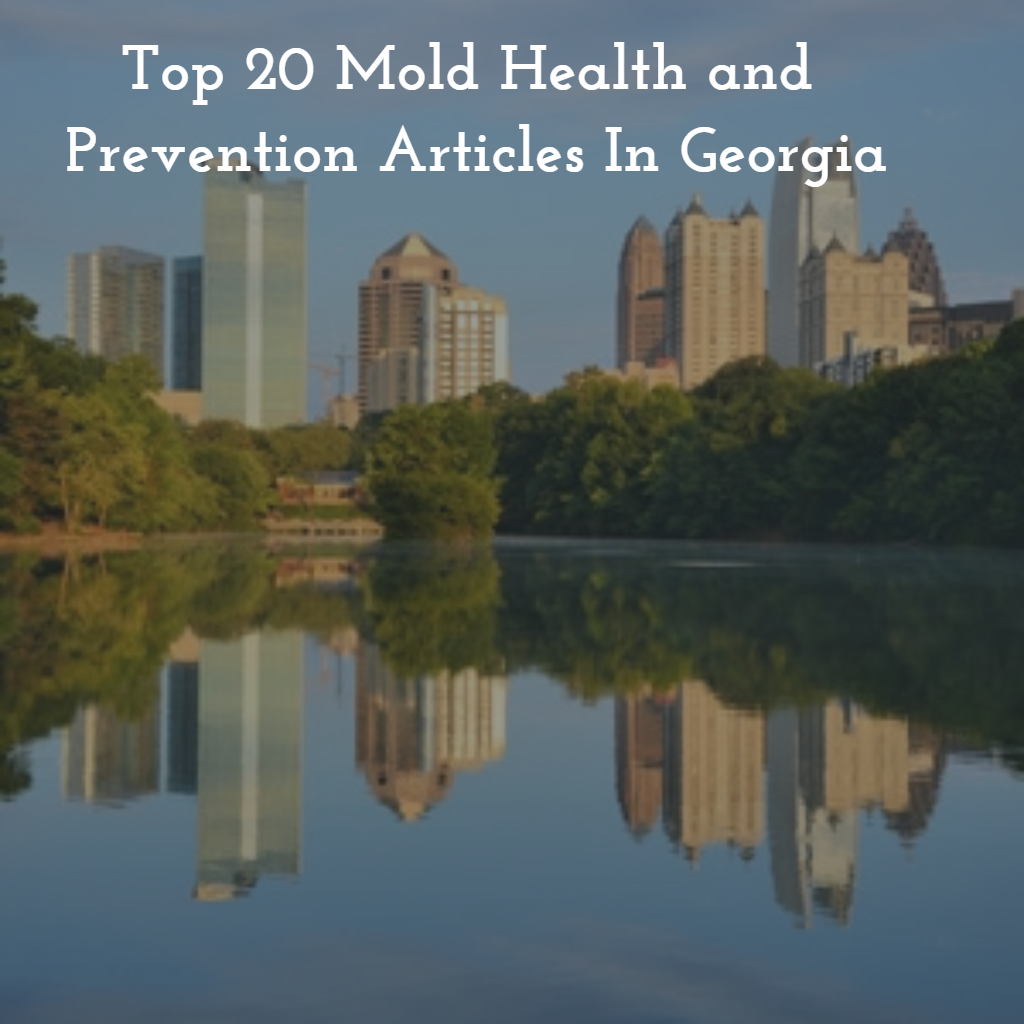
by Eric Brown | Apr 15, 2016 | Air Conditioning, Attic Mold, Basement Mold, Beware Of Mold When Buying A Home, Bleach and Mold, Can Black Mold Poison You?, Can Mold Kill?, Christmas Tree Mold, Chronic Inflammatory Response Syndrome (CIRS), Crawlspace Mold, Dead Mold Spores, Flood Clean Up, Health, How Toxic Is Mold?, Indoor Air Quality, Killing Mold, Mold and Asthma, Mold and Depression, Mold and Infants, Mold and Multiple Sclerosis, Mold and Parkinson's Disease, Mold and Pregnant Women, Mold and Sids, Mold and Sinusitis, Mold Facts, Mold In Apartment, Mold In The Bible, Mold Information, Mold Inspection, Mold Remediation, Mold Removal, Mold Removal Cost, Mold Risk During Renovation, Mold Sensitized Success Story, Questions and Answers, Sewer Backup, Sippy Cup Mold, Stachybotrys Black Mold, Top 15 Mold Prevention Tips, Toxic Mold, Water Damage Restoration
The Ultimate Mold Education Resource

The Ultimate Mold Education Resource
The goal of Mold B Gone is to educate our customers about mold. We strongly believe that an educated and informed consumer can make better decisions when they have concerns about mold.
Included in this article are 36 links to articles that will help you learn about mold.
Please bookmark this page because we will update it with new articles as they are researched and published.
If you have questions about mold removal, crawl space mold removal and encapsulation, other services we offer, and/or our 1 year up to 25 year guarantee, call us, 678-697-6267, or send us an e-mail. We look forward to serving you. 🙂
Mold Facts and Information (7 Articles)

Mold Facts and Information (7 Articles)
Priests were the equivalent of today’s mold inspectors. This article lists the three passages cited in Leviticus. Learn more!
Mold Fact 1: The Key Ingredient Mold Needs To Thrive Is Moisture. There are 9 more mold facts explained in this article. What do you think they are?
Top 4 Reasons Mold Grows In Your Attic! The purpose of this article is to explain why mold grows in your attic and prevention tips.
Top 3 Reasons Your Crawlspace Has High Humidity. This article explains why your crawlspace is humid, why this leads to mold and how you can fix the problem!
Steps Residents Can Take If They Have Mold In Their Apartment! This article explains what you can do if you find mold in your apartment. Learn more!
Top 10 Reasons Mold Is Scary!
Here are the top 10 reasons we believe that mold is scary. Enjoy!
This article provides you with information to help you determine if you have a mold problem and explains what you should and should not do if you do find mold.
Black Mold (2 Articles)

Black Mold (2 Articles)
Recently a news article featured a woman who believes that she was poisoned by toxic black stachybotrys mold. This article explores this topic further!
Stachybotrys is considered the king of molds because exposure to this toxic black mold causes 15 serious health conditions. Learn more!
Mold and Health (13 Articles)

Mold and Health (13 Articles)
Wondering if you are sensitive to mold? This article explains how to determine if you are mold sensitized, seeking treatment, and the next two steps to health!
This article explains why mold can be toxic, listing 10 specific health conditions. Learn more!
Potential Health Complications Mold Exposure Has On Pregnant Women and Infants! Questions answered about SIDS, asthma, miscarriage, and pulmonary hemorrhage.
This article article explains why mold grows on sippy cups, why it could make your child sick, and how you should properly clean the sippy cup!
Mold Remediation Improves Health! This article explains why, citing an interview with Jack and Helen Graham, a Mold Sensitized Success Story!
Could Some People Diagnosed With Multiple Sclerosis Actually Be Suffering From Mold Sickness? This article explains how and why. Learn more!
One in Three people get sick from their Christmas tree. This article explains why and what you can do to feel better. Learn more.
Why Do Some People Get Sick From Mold And Others Do Not? This article explains why 1 in 4 people have a genetic predisposition to mold illness.
This article explains why many suffering from CIRS are diagnosed with depression caused by mold. Both scientific and anectodal data are cited. Learn more!
Does Mold Cause Parkinson’s Disease? The purpose of this article is to explain why and how mold could be a possible cause of Parkinson’s Disease.
Top 3 Reasons Mold Sickness Is A Hidden Epidemic! You could be sick from mold and not even know it. This article explains why mold is a hidden epidemic!
37 million Americans suffer from sinusitis. Cause? This article lists the top 10 stats and facts citing MAYO clinic research that believes mold is the cause!
According to the CDC, rates of asthma among children in Georgia is 3% above the national average. Is mold a factor? This article cites stats and research!
Water Damage and Mold (4 Articles)

Water Damage and Mold (4 Articles)
Concerned about sewer backups? This article explains what causes sewers to backup and how you can prevent this from happening. Learn more!
Flood and water damage not only disrupts your life but can also be hazardous to your health! This article explains the top 3 hazards and prevention measures!
A flooded home or business is always a stressful situation. This blog provides you with the 3 steps required to reduce flood damage and most importantly, mold!
Water damage restoration restores a property to pre-loss condition after a flood. Check out the top 3 facts. Hint: Mold is not the only concern.
Mold Inspection and Prevention (7 Articles)

Mold Inspection and Prevention (7 Articles)
Mold growth can be prevented. This article list the top 15 mold prevention tips, to help you live in a mold free home.
Top 3 Reasons A Mold Inspection Is Essential! This article explains why you should submit an offer to purchase, subject to a home AND mold inspection!
Home improvement is an American tradition. But, did you know that 6 out of 10 homes could have mold? Renovating can cause serious problems. Learn more!
If you are concerned about mold in your basement or your basement was recently flooded, implement these 10 tips to prevent mold growth. Learn more!
If you or someone in your family suffers more frequently from colds or flus and you are not sure why, the cause could be poor indoor air quality. Learn more!
The purpose of this article is to explain how you air conditioner could be a source of mold contamination making you sick and what you can do to fix it.
Wonder what happens during a mold inspection? This article answers all your questions, listing the top 4 actions taken by reputable inspectors.
Mold Removal (3 Articles)

Mold Removal (3 Articles)
Have a mold concern, wondering what it will cost to remove? This article provides you with a detailed explanation of how mold removal cost is determined!
Mold sprays, bleach, biocides, and fungicides are an ineffective “short cut” to mold removal. Killing mold is not the answer! This article explains why.
Mold Removal Is Referred To As Mold Remediation Because Professionals Follow These 8 Steps. This article explains the steps and why you need to hire a pro!

by Eric Brown | Mar 4, 2016 | Attic Mold, Bleach and Mold, Dead Mold Spores, Health, Indoor Air Quality, Killing Mold, Mold Facts, Mold Information, Mold Inspection, Mold Remediation, Mold Removal, Questions and Answers
Top 4 Reasons Mold Grows In Your Attic!

Top 4 Reasons Mold Grows In Your Attic!
Mold B Gone has been very busy this year doing many attic mold remediation projects.
The purpose of this blog is to explain why you have mold in your attic.
Four Common Causes Of Mold Growth In The Attic
Causes Of Attic Mold: A Leaking Roof
If you have a roof leak, you may see water on your floors and water stains on the ceiling. The good news, you know that you have a problem.
However, if you have a roof leak and it goes unnoticed leading to moisture accumulation in your attic, this will eventually lead to mold growth that you may not even know exists.
This is the reason it is important to inspect your attic several times each year, just to make sure that there is no moisture buildup.
- Check for discoloration of insulation and wood (e.g. rafters, sheathing, joists, attic side of fascia boards, etc.).
- Check roof valleys (i.e. where two roofs join at an angle), which are highly susceptible to roof leaks.
- Observe skylights, chimneys, attic windows and any portion of the attic/roof where dissimilar materials join each other (including flashings). These places are hotbeds for potential moisture intrusion.
- If you have a vapor barrier installed, check for condensation. Although this is not really a roof leak, it is nevertheless a sign of a moisture problem. And moisture problems lead to attic mold problems!
- Make sure there are no leaks coming from and around attic plumbing stacks.
The first step to addressing the moisture cause is to get your roof repaired, then call us to remove the mold.
Causes Of Attic Mold: Missing Insulation or Improperly Installed Insulation
The quest to save money on heating and cooling bills motivates many Do-It-Yourselfer’s to install more insulation in their attics.
Unfortunately, if the wrong kind of insulation is chosen or if it is installed improperly, this can cause moisture from the lower levels of your home to rise and get trapped in the attic.
As we have written before, the primary cause of mold growth is moisture. Your attic is made of the food mold loves to feed on.
With respect to the type of insulation, if you are layering insulation on top of other insulation, make sure you do not use the kind that has paper or foil backing because it acts as a vapor barrier and can trap moisture in the insulation.
Before you decide to add more insulation to your attic, determine if you need more first. If you are unsure, contact a professional.
Causes Of Attic Mold: Inadequate Attic Ventilation
One of the problems we have encountered in our projects is the fact that insulation is blocking the ventilation ducts that distribute air in the attic.
The lack of ventilation is another major cause of mold growth in your attic.
Air travels up to the attic meaning activities such as cooking, bathing, showering, etc will produce moisture that will makes it way up to the attic. If there is poor ventilation, the moisture gets trapped in the attic and can lead to mold problems.
Check your soffit vents and make sure they are free of insulation, bird nests, and other debris that could be blocking them and preventing proper air flow.
If you are unsure if the ventilation is ideal in your attic, contact a home inspector or give us a call so that we can take a look.
Causes Of Attic Mold: Fans Vented Into The Attic
Mold will grow if there is moisture, food, and warmth.
Poor building practices occur when the dryer vents, plumbing vents, kitchen or bathroom fans are vented into the attic.
Dryer exhaust vents, kitchen exhaust fans and bathroom exhaust fans are designed to pump moisture out of your home. Make sure that they are vented to the outside of your home and not in the attic.
Plumbing stacks in the attic can also be a source of condensation, which can lead to attic mold growth. Plumbing stacks can also emit hazardous gases, so make sure that they too do not terminate inside the attic.
If any of your vents are routed into the attic, hire a reputable contractor to re-route the vents to the outside of your house.
Why Does Mold Grow In My Attic?: Final Thoughts
Once the cause of your attic moisture issues are identified, then the next step is to determine if you have a mold problem.
Mold is nature’s recycler and will grow and proliferate when moisture is present.
Condensation in an attic, heat and humidity from household activities (cooking, showering, etc.), and the fact that the attic provides an excellent food source for mold, provides the ideal conditions.
All mold needs to grow is 24 to 48 hours and as long as the proper conditions exist, it will continue to proliferate.
If you do find mold in your attic, DO NOT use bleach or try to kill the mold!
The first step is to contact Mold B Gone for a mold inspection and air quality test.
During the inspection, tape or swab samples of suspected mold may also be taken and sent to a micro-biology lab.
Once the type of mold and spore count is determined, we will provide with a scope of work on the best way to remediate the mold in your attic.
Questions? Call 678-697-6267 or send us an e-mail. We look forward to serving you! 🙂
What’s Lurking In Your Attic Infographic

What’s Lurking In Your Attic Infographic

by Eric Brown | Feb 19, 2016 | Bleach and Mold, Dead Mold Spores, Health, Indoor Air Quality, Killing Mold, Mold Facts, Mold Information, Mold Remediation, Mold Removal
Dead Mold Spores Are Harmful!

Dead Mold Spores Are Harmful!
In a recent interview with a mold survivor, Christa Upton, she stated the following:
Don’t “kill” or spray mold! Instead, properly remediate it and hire a professional with experience and references that knows what they are doing…. We “killed” mold, sprayed with Lysol, bleached sub-floor and ran fans, replaced carpet but left mold in the sub-floor, walls, etc. Eight months later I was so sick I could not get out of bed….Not one spray has been shown to denature these toxins. Some sprays appear to make toxins worse or more airborne. Humans cannot smell most mold toxins, especially after the mold is “dead.” They are so small that they cannot be seen. They are so tiny that they generally cannot be removed with air purifiers or filters. But they are deadly.
As this quote demonstrates, when you find mold, the initial reaction is to try to kill it with disinfecting sprays and bleach. This attempt at killing mold is not a long term solution and can in fact make you sick!
As stated by Michael Pinto, CEO of Wonder Makers Environmental:
“Killing mold, but leaving the residue in place, is not acceptable. Since many health impacts can be triggered by exposure to both live and dead mold spores, the source and secondary contamination must be removed.” (MOLD INDOORS: Killing it is Not Enough)
One of the problems with the mold is the fact that there is so much bad information on the Internet that recommends that it is safe to try to kill mold. In the case of Christa, this proved to be dangerous to her health.
Unfortunately, because of the lack of regulation in the mold remediation industry, even some contractors believe that killing mold is the answer. Generally speaking, these contractors are poorly trained and really do not understand mold. There is no “quick fix” for mold contamination situations. As a consumer, you need to be cautious about hiring contractors that offer magical solutions that involve just spraying a chemical to kill the mold dead. The purpose of this article is to educate you on mold basics and expand on why killing mold is not the answer.
Mold 101: The Basics
- Mold thrives when moisture is present. Removing mold without addressing the cause of the problem, ie. identifying the moisture source is not a long term solution. Before any mold removal, the moisture problem must first be found and fixed.
- Exposure to mold spores, both live and dead, and their byproducts like microbial volatile organic compounds (MVOCs), mycotoxins, connecting filaments, etc. can cause illnesses ranging from minor allergic reactions, respiratory problems like asthma and sinusitis, to more serious, life threatening illnesses.
- With respect to health, every individual responds to mold differently. Some people get sick, others don’t. A little bit of mold can make some residents of a property sick, but will not have an impact on others. Research has shown that 25% of the population have a genetic predisposition to mold illness and the condition known as Chronic Inflammatory Response Syndrome (CIRS).
- Mold is a biological agent that will continue to grow as long as the right conditions exist. This is the reason that mold is such a concern because it will continue to thrive and grow unless it is removed and the underlying moisture cause is fixed. In short, ignoring a mold problem will make the situation worse and pose more dangers.
- Contractors trained in mold removal, refer to the process as “remediation” because they have invested in specialized training and equipment and take precautions to prevent the spread of the mold in other parts of the building. Mold remediation specialists will never recommend a “quick fix” because they understand that relying on mold sprays, bleach, biocides, and fungicides are an ineffective “short cut” to mold removal.
The Bleach Myth About Killing Mold!
“Perhaps the most misunderstood aspect of bleach when proposed as a cleaner or sanitizing agent is that its effectiveness is greatly reduced in the presence of organic material. To be a successful sanitizer, bleach must be used on clean materials and surfaces. This is why bleach products are used in the laundry after the wash cycle or in a commercial kitchen as a component in the third sink after the dishes have been washed and rinsed. The efficacy of bleach as a sanitizer is also compromised by heat and light. Despite the fact that the chlorine odor may linger for some time after use, bleach loses strength so quickly that it is not considered to have a residual effect that would prevent future bacterial or fungal growth.” (Michael Pinto, Why Restoration Professionals Should Avoid Using Bleach)
One of the benefits of the Internet is it allows anyone to search for a topic of interest and find the information they are looking for.
Unfortunately, with respect to mold removal, the bleach myth is perpetuated on the Internet on countless websites.
Bleach may have some impact on non-porous materials, like bathroom tiles, but bleach is completely ineffective on porous materials:
“If you spray bleach all over your “black toxic mold” you won’t kill every single spore….To kill every single mold spore using bleach, for example, you’d have to use such a high concentration of disinfectant and you’d have to keep it on the surface for so long that more likely you’d damage the structure – and still miss some toxic spores.” (How to Kill Mold – Do We Want to? Is Dead Mold Dangerous?)
Other reasons we do not recommend the use of bleach:
- Bleach does not address the cause of the mold problem!
- Bleach is dangerous!
- Bleach evaporates!
Bleach Does Not Address The Cause Of The Mold Problem!
Experienced mold removal specialists understand that the most effective way to deal with mold is to first find the moisture source and make sure it is fixed.
The next step is to remove the mold contaminated porous materials.
Proper removal of mold contaminated materials like drywall, carpet, soft goods, insulation, and other porous materials is essential because mold has hyphae, which are basically roots that embed themselves in the material.
This is the reason that bleach does not work. Bleach may kill some of the surface mold, but it will not be able to penetrate and kill the roots.
The other reason bleach is a problem is that it is diluted with water. Spraying this is counter-productive because water is an essential ingredient mold needs to grow.
Keep in mind, even if another biocide or fungicide is sprayed on the material, killing the roots, the material will still be contaminated with dead spores. The best course of action to permanently deal with a mold problem on porous materials is to properly dispose of the contaminated material.
Bleach Is Dangerous!
When you are using bleach you should always wear gloves, goggles, and a respirator for three key reasons.
- Bleach is a corrosive that could irritate and damage your skin.
- During the spraying and evaporation process, bleach releases chlorine gas that will impact the eyes and respiratory system.
- One of the by-products of chlorine bleach are dioxins, linked to cancer.
If you intend to use bleach for household cleaning projects, never mix it with other cleaning solutions or detergents that contain ammonia because toxic fumes will be produced.
Bleach Evaporates!
The core ingredient of bleach is chlorine. Over time, chlorine can evaporate and escape through the plastic container. In short, the longer bleach sits, the more ineffective it will become because the chlorine dissipates.
Killing Mold Is Not The Answer!
“Even if in theory we could “kill” every spore, the assumption that they are unimportant is highly questionable. “Dead” spores often contain allergens or toxins that are just as harmful to someone breathing them or getting such mold in one’s eye or in a cut, as before….The object is not to “kill” mold, it is – to remove the mold reservoir in the building by physical cleaning or in cases of items that can’t be cleaned, such as drywall, soft goods, carpets, furniture, or insulation, remove the moldy material – to identify the cause and make sure that’s been corrected.” (How to Kill Mold – Do We Want to? Is Dead Mold Dangerous?)
If you have a mold problem, contact Mold B Gone. We are experts at IAQ testing, finding the mold, identifying the moisture source causing the mold, removing the mold, and most importantly, preventing future mold growth using our proprietary mold prevention system chemical line backed by a minimum guarantee of 5 years.
Questions? Call 678-697-6267, send us an e-mail, or contact us on FaceBook! We look forward to serving you. 🙂

by Eric Brown | Jan 12, 2016 | Air Conditioning, Basement Mold, Beware Of Mold When Buying A Home, Bleach and Mold, Can Black Mold Poison You?, Can Mold Kill?, Chronic Inflammatory Response Syndrome (CIRS), Flood Clean Up, Health, Indoor Air Quality, Killing Mold, Mold and Asthma, Mold and Depression, Mold and Multiple Sclerosis, Mold and Parkinson's Disease, Mold and Sinusitis, Mold Facts, Mold Information, Mold Inspection, Mold Remediation, Mold Removal, Mold Removal Cost, Mold Risk During Renovation, Questions and Answers, Stachybotrys Black Mold, Toxic Mold, Water Damage Restoration
Top 20 Most Shared Mold Health and Prevention Articles In Georgia

Top 20 Most Shared Mold Health and Prevention Articles In Georgia
August, 2015, marked a historic month for Mold B Gone.
We launched this website, www.moldbgonega.com, dedicated to creating mold awareness for residents of Georgia.
Listed below are the top 20 articles, listed in the order of most viewed.
If you have questions or need help, the Mold B Gone Team looks forward to serving you. Call 678-697-6267 or send us an e-mail!
We have been serving Georgia since 2009 and have built a solid reputation in the state because of our expertise and knowledge, 1 year up to 25 year guarantee, and peace of mind we offer our customers.
Twenty Most Shared Mold Health and Prevention Articles In Georgia
- Are You Sick From Mold Because Of Your Genes?
- Top 10 Facts About Mold
- 7 Places Mold Hides In Your Home!
- Is Mold Sickness A Hidden Epidemic?
- Why Is Black Mold A Health Concern?
- Are Sinus Infections Caused By Mold?
- Can Toxic Black Mold Poison You?
- How Do I Know If Mold Is Making Me Sick?
- Are Dead Mold Spores Harmful?
- How Does Mold Cause Depression?
- Does Mold Cause Multiple Sclerosis?
- What Is The Link Between Mold and Parkinson’s Disease?
- Is Your Air Conditioner Making You Sick?
- 10 Tips To Prevent Basement Mold!
- Top 10 Reasons Mold Is Scary!
- The #1 Mistake Home Buyers Make!
- How Is Mold Removal Cost Determined?
- 8 Steps To Mold Remediation Success!
- What Is The Link Between Mold and Asthma?
- Top 3 Facts About Water Damage Restoration
